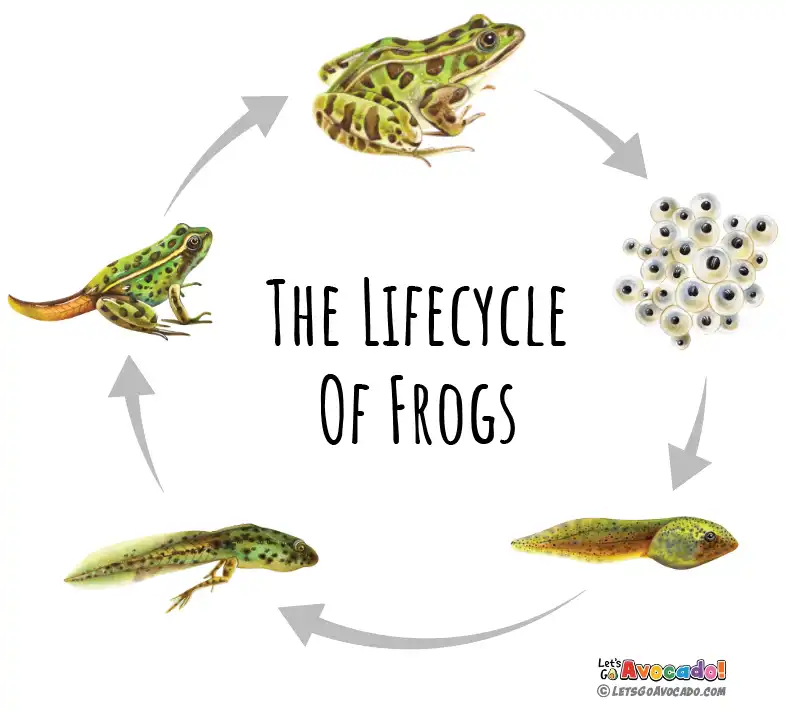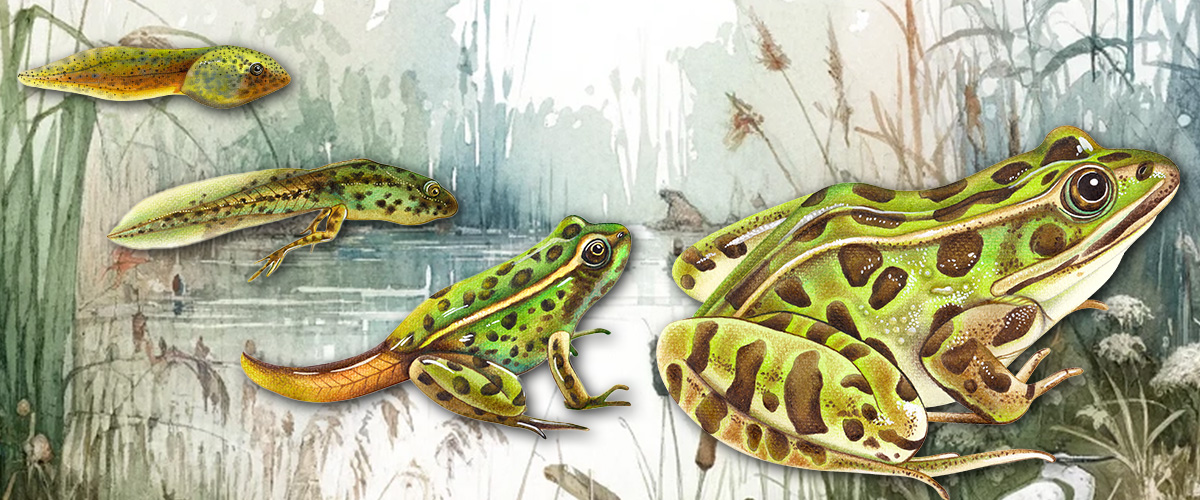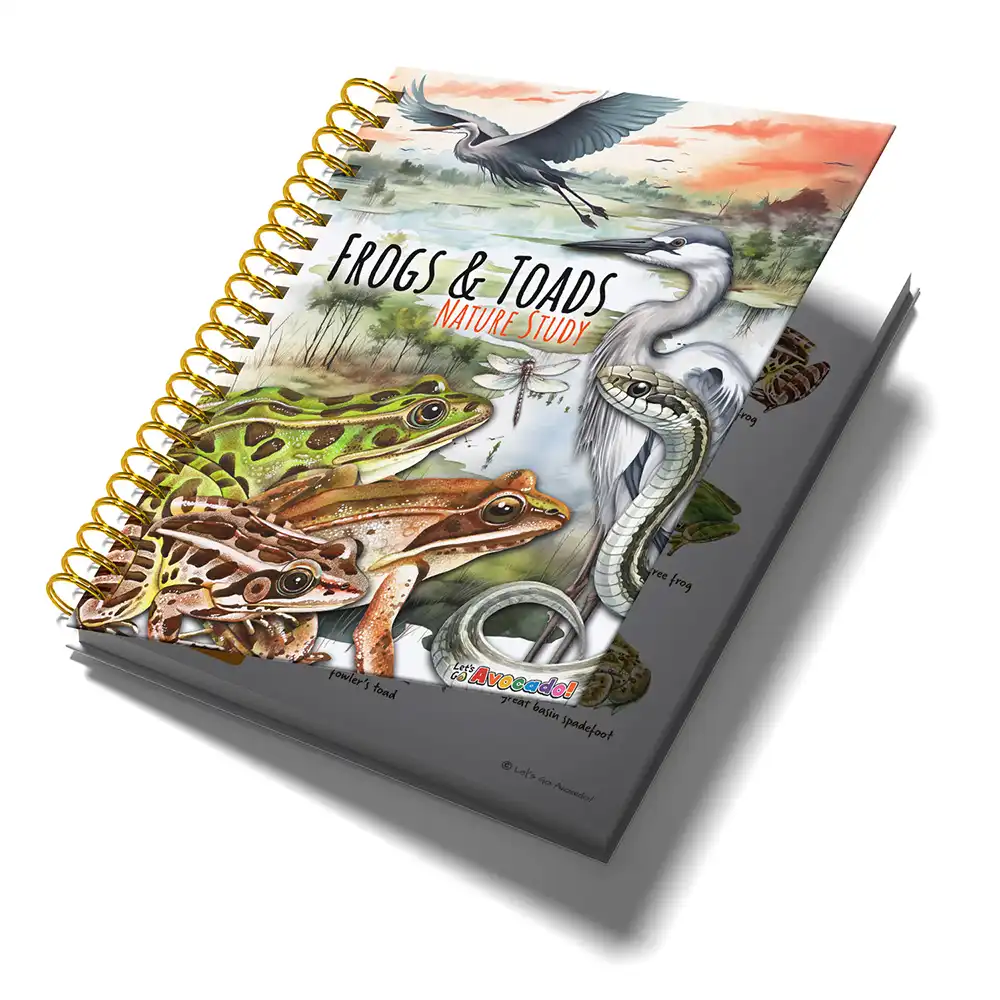This page may contain affiliate links.
Read our disclosure and privacy policy here.
Have you ever wondered how a tadpole turns into a frog? Raising tadpoles at home or in a classroom is a fantastic way to learn about nature and witness the magic of metamorphosis up close. It’s a fun project that can teach you a lot about life cycles, responsibility, and the importance of taking care of our environment. Whether you’re a curious student or an enthusiastic parent, this guide will help you set up a perfect home for tadpoles, keep them healthy, and release them back into the wild when they are ready. Let’s dive in and discover the amazing journey from tadpole to frog!
Table of Contents
Backyard Science: Useful Tips for Raising Tadpoles into Frogs
Tadpole to Frog Metamorphosis

Metamorphosis from tadpole to frog is a fascinating process to observe. You will see tadpoles sprout back legs first, then front legs, and gradually lose their tails as they transform into frogs. This activity teaches you about animal life cycles, growth, and adaptationAn animal adaptation is a physical feature or a specific behavior that allows it to better survive in its environment.. By watching and caring for tadpoles, you gain hands-on experience in biology, learn responsibility, and understand the importance of caring for living creatures. It’s an engaging way to bring science lessons to life.
Setting Up the Tadpole Tank
First things first, you’ll need to set up a home for your new tadpole. Here’s how to get started:
- Tank Size: Pick a tank that’s at least 10 gallons. This gives the tadpoles plenty of space to swim and grow. You could also use a plastic storage bin, but a tank gives you better viewing possibilities.
- Water: Fill the tank with dechlorinated water or water from the pond where you found the tadpoles. Chlorine, which is usually in tap water, can be harmful to them. You can dechlorinate tap water by filling the tank and letting it sit for a day, or you can use dechlorinating drops available at pet stores. If you are using water from the pond, there is a very good possibility you are going to have a lot of other organisms in there as well! We did this one year, and a few weeks into our project we had dragonflies in the house! We didn’t realize there were dragonfly larvae in the water we collected from the pond.
- Plants: Add some aquatic plants like Elodea or Anacharis. These plants provide hiding spots and extra food for the tadpoles. You can also get some algae from the pond and place it in your tank – tadpoles will feed on algae.
- Substrate: Use smooth river stones or sand at the bottom of the tank. Avoid sharp gravel that could hurt the tadpoles.
- Decor: Include some rocks or floating objects. As the tadpoles grow legs, they’ll need places to climb out of the water. This is critical!
Keeping the Water Clean
Clean water is crucial for your tadpoles’ health. Here’s how to keep their water clean and healthy:
- Water Changes: Change 25-50% of the water every week. This keeps the water fresh and removes waste. If you have more than one tadpole, or if you are not using an aquarium filter, you may want to do a water change every 2 to 3 days.
- Filtration: Use a gentle, low-flow filter. It helps keep the water clean without creating strong currents that could stress the tadpoles.
- Water Quality: Regularly check the water’s pH (it should be around 6.5-7.5) and temperature (65-75°F) to ensure a healthy environment. You could also test the ph of the water at your pond and try to match this in your aquarium. Pet stores will have the testing kits you need to test and change water ph levels.
Feeding Your Tadpoles
Tadpoles have different dietary needs as they grow. Here’s what to feed them:
- Early Stages: When they’re small, feed them boiled and finely chopped leafy greens like spinach, lettuce, or kale. You can also give them algae wafers or special tadpole food. Algae wafers are the easiest in my opinion and are readily available at pet stores.
- Later Stages: As they grow, tadpoles start to need more protein. Introduce foods like frozen or freeze-dried bloodworms and daphnia, also available at pet stores.
- Feeding Amount: Only give them as much food as they can eat in a few minutes. This helps keep the water clean and prevents overfeeding.
Releasing the Frogs
Once your tadpoles have transformed into froglets, it’s time to prepare for their release:
- Gradual Acclimation: Before releasing, get the froglets used to outdoor conditions. Place the tank in a shaded area outside for a few days.
- Release Location: Choose a spot that’s safe and similar to their original home, like a nearby pond or stream. Ideally release them in the same place where you found them.
- Timing: Release the froglets in the evening. This reduces their exposure to predators and extreme temperatures.
Fun Facts About Tadpoles and Frogs
- Amazing Metamorphosis: Did you know tadpoles lose their tails as they become frogs? They reabsorb the tail tissue to fuel their transformation!
- Fast Growers: Tadpoles can double in size in just a few days when they have plenty of food and clean water.
- Legs First: Tadpoles grow their back legs before their front legs. You’ll see little hind legs sprout first!
- Tiny Teeth: Tadpoles have tiny, comb-like teeth that help them scrape algae off rocks and plants for food.
- Frog Communication: Frogs use a variety of calls to communicate. Male frogs croak to attract mates and to mark their territory. Each species has its unique sound!
FAQ: 10 Questions Kids Ask The Most About raising tadpoles
- How long does it take for a tadpole to turn into a frog?
It usually takes about 6-12 weeks, but this can vary depending on the species and environmental conditions. - What do tadpoles eat?
Tadpoles eat algae, boiled leafy greens, and special tadpole food. As they grow, they need more protein, like small insects. - Why do tadpoles have tails?
Tadpoles use their tails to swim. As they transform into frogs, they absorb the tail for nutrients and develop legs. - Can I keep a frog as a pet after it grows up?
It’s best to release the frog back into the wild where you found it. Frogs are an important part of their ecosystemAn ecosystem is a community of living organisms, like insects and birds, and non-living components, like water and rocks, that interact with each other in a specific area. Learn More. - How do tadpoles breathe?
Tadpoles breathe through gills, like fish. As they become frogs, they develop lungs for breathing air. - Why is clean water important for tadpoles?
Clean water is essential because it keeps them healthy by preventing the buildup of harmful waste and bacteria. - What happens if the water gets too dirty?
Dirty water can make tadpoles sick and may even cause them to die. Regular water changes are important. - Do tadpoles sleep?
Yes, tadpoles do rest, but they don’t sleep like humans. They take short naps throughout the day and night. - Can I use tap water in my tadpole tank?
Only if it’s dechlorinated. Chlorine in tap water can be harmful to tadpoles. You can use water conditioners to make it safe. - What should I do if my tadpole stops moving?
Check the water quality and temperature. Tadpoles need clean, warm water to stay active. If the conditions are good, it might just be resting.
References
- FrogWatch US: This site provides information about frogs and toads, including how to identify different species and their calls. It also offers citizen science opportunities where kids can contribute to frog conservationThe act of protecting and preserving natural resources and the environment. Conservation efforts are important to protect beavers and their habitats. efforts. Visit FrogWatch USA
- Amphibian Ark: Amphibian Ark offers educational resources and activities focused on amphibian conservation. Kids can learn about different amphibian species, their habitats, and the importance of protecting these creatures. Visit Amphibian Ark

There’s a lot to explore right where we are, in our own neighborhoods and backyards! Join us while we get off the couch and explore the everyday wonders of nature, science, space, engineering, art, and anything else we stumble upon during on our adventures.




